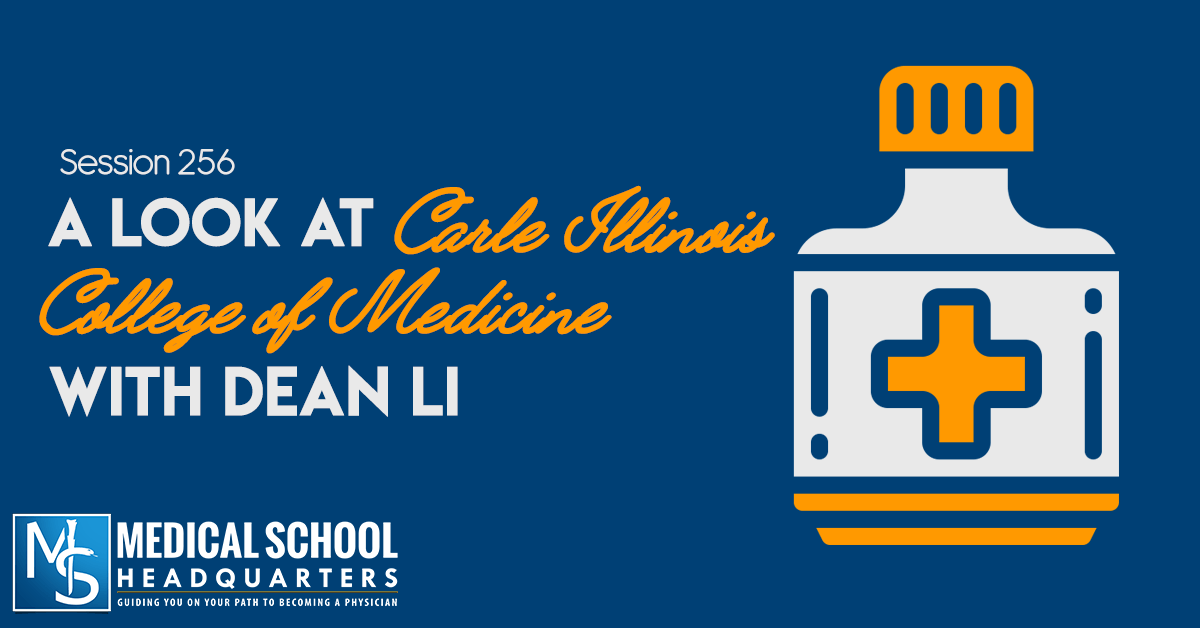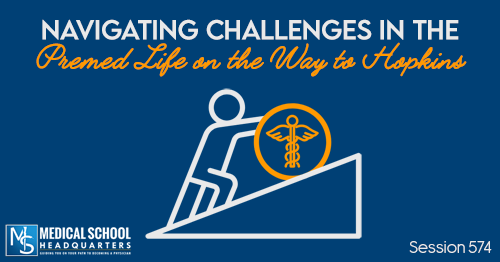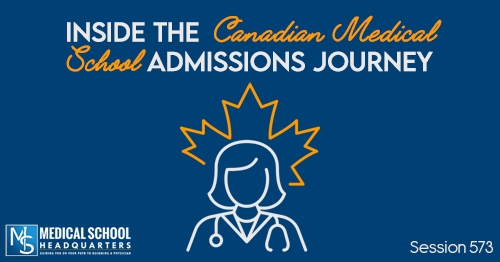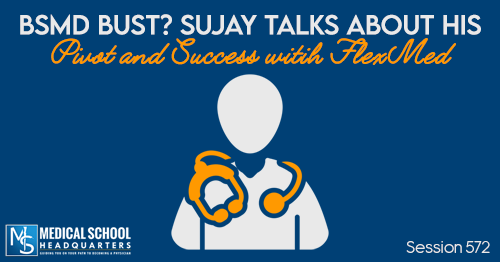Apple Podcasts | Google Podcasts

An Interview with Dr. King Li of Carle Illinois College of Medicine
Carle Illinois is hoping to change the way medicine is taught, focusing on engineering and medicine together. This is our discussion with the dean, Dr. King Li.
Dr. King Li has had a vision of what medicine should be for a long time. Now, as the Dean of the Carle Illinois College of Medicine, Dr. Li may now put that vision into practice. As a dean of a medical school, they’re trying to merge technology and engineering into the medical curriculum.
In this episode, we dive into why the medical school came about, his vision for the school and for the future of their graduates!
Don’t forget to check out all our other amazing podcasts on the MedEd Media Network.
[01:51] Dr. King Li on His Path to Becoming a Doctor
King came to be a doctor as a combination of multiple events that impacted his life. He grew up knowing he had to have a positive impact on society. At the same time, he was interested in both engineering and technology.
Looking at the tremendous developments in medicine, he realized that a lot is stimulated by technology. When King was in college, the CT scan has just been introduced – a merging of engineering and technology with a tremendous applications in medicine.
When he was in medical school, he was deciding on different specialties and got attracted to the discipline of radiology and became a radiologist. He felt it was the specialty that married engineering, technology, and medicine the most.
Now, he is the dean of medicine that is the world’s first engineering-focused college of medicine.
“It exemplifies how someone in their premed years can just follow the passion and everything can work out.”
[05:18] The Dimming Future of Radiology and Other Disciplines
Electronic retail has replaced a lot of the physical stores. And considering that radiology might be erased in the light of new technologies today, King explains we shouldn’t be afraid of the impact of technology and engineering. But we should stay ahead of the curve and turn the table around and say, how can we leverage engineering and technology to improve health care. How can we do this in a way that increases quality, decreases cost, and also increases accessibility.
Take radiology, for example, and imagine there is very little human intervention in terms of interpreting the images. This would democratize the availability of very high quality diagnostic tools to many people.
“We have to welcome that change rather than being afraid of that change.”
The way physicians can deal with this change is if they see a part of the job being replaced, they should be able to figure out what part of the job cannot be replaced by a machine. This not only applies to Radiology but to all parts of medicine.
In an ambulatory clinic for example, most of the tools we use are very old. The stethoscope was discovered 200 years ago and the otoscope is 180 years old. A lot of those can be replaced by more accurate modern day technology. At the same time, it can be done remotely. Putting in other types of remote sensing and ways to capture the history, you may be able to replace most of what you do in an ambulatory clinic and not need a physician to do that. That said, radiology may not be the only discipline that would be impacted.
[08:45] Technology Then & Now
You walk into a doctor’s office today versus 30 years ago, and what technology has changed significantly? King illustrates that there’s not a lot. You still use stethoscope and otoscope. But now, you have access to a lot of information (thanks to Google). Whereas before, you’d have to carry a lot of information in your hand. So the whole process of training and practice has to follow the changes in technology. But we are not really changing it in the way that is keeping up in the changes in technology and society.
Being in academic medicine, King saw technology as a way that we can leverage not just patient care but also education. This brings us to today. Hence, he believes that the educational mission has been falling tremendously behind. King thinks this is accounted for by the skewed incentives we have in the healthcare industry.
“Technology was a way that we can leverage not just patient care but also education and of course, in research.”
That said, technology has been able to drive for quality and drive down cost for all other industries. Whereas in the healthcare industry, technology has been blamed for driving up cost instead of driving it down. King explains you have to look at the reason for this. Moreover, figure out how these physician innovators have to become the catalyst so that new technology can be used to drive high quality, drive down cost, and increase accessibility.
I had this conversation with an interventional cardiologist back in episode 43 of the Specialty Stories podcast. He talked about a thread of decreasing reimbursements from Medicare and Medicaid. And I asked whether the technology they’ve been using have been out long enough now that they’re getting cheaper. Why wouldn’t they reduce the cost? And he explained there are still physicians getting up in the middle of the night and doing the work.
Dr. King Li on High Costs in the U.S. Healthcare System
King explains what drives the cost up are three major things, especially in the U.S. healthcare system – labor cost, drug cost, and administrative cost. We have so many different types of insurance companies, you have to do different types of billings because of the different reimbursement schemes. To the extent that we can decrease the labor cost using engineering and technology, you can help drive down the cost. So a lot of the time where we use manpower, all of that can be replaced. Then you have to provide more person to person care while driving down the cost.
A lot of research done in the past is mostly disease-oriented, not in improving the process of health care delivery. You see bigger, better, and more expensive machines in the hospitals, but very little improvement in the ambulatory care environment. When in fact, this is where you can impact more patients.
“How can technology and engineering be deployed to improve things so we can get higher quality, minimal cost, and higher accessibility?”
[15:35] The Mission of Carle Illinois Medical School and Their Curriculum
King describes the concept behind their school as a collective effort. It was developed when the previous chancellor commissioned this strategic plan. Comparing to other schools, they found their school to have tremendous engineering and technology. The College of Engineering has been strong for years and years. So it made sense for them to do something fundamentally different and have high impact. Hence, they have come to the idea of marrying engineering and medicine.
One of the fears I would see as a student is being judged based on the basics. And if you’re concerned about them adding engineering in their curriculum, King clarifies they’re not adding but rather, substituting. Imagine the way you learn about cardiovascular disease in the old way of teaching – memorization. In their curriculum, they start with fluid dynamics. This type of understanding will allow the students to not just memorize stuff.
Another example is microbiology where we used to memorize every single microorganism. But at Carle Illinois, they introduced the concept of mathematical modeling, where they understand the basic concepts of factors needed to be thought through inn determining specific interventions to be used. This said, you’re looking at microbiology in a totally different way.
“The board is also responding to the fact that memorization is not the answer.”
Most of the board exam is catered to problem-solving. So instead of memorization and understanding the application (first three steps of the learning pyramid), the school goes all the way to the next three levels all the way to creativity. They want to prepare their students to do well in their boards as well as to encourage their curiosity and creativity.
[21:37] Dr. King Li on the Types of Students They Wish to Attract to Carle, and Their 4 C’s
Aside from the traditional premed requirements, they have requirements on the quantitative sides. All incoming students will have to have high-level mathematics, knowledge in computer science, and statistics.
Fundamentally, they’re looking for four different qualities, which they call the 4 Cs: Compassion, Competence, Curiosity, and Creativity.
The first two, King explains, are the most generally accepted as the most fundamental requirements of being a physician. But curiosity and creativity are not being stressed in traditional medical education. He adds that there’s a saying a medicine where “you see one, you do one, and you teach one.” This an apprenticeship system. At the same time, you don’t challenge this standard of practice.
“Curiosity and creativity are not being stressed in traditional medical education.”
How Engineering and Innovation Is Built into the Curriculum at Carle Illinois
However, their curriculum is structured in a way where every student in a required clinical rotation will be required to come up with a new idea to change things. They’re encouraged to challenge the existing paradigm. To help them, they have engineering rounds where students will be exposed to engineering faculty and conditions to bounce new ideas around. So by the time they finish with the rotation, they should have an idea to present. Then on their fourth year, they will be asked to take the idea all the way to a prototype. To make this possible, the student will get to select members of their team (coming from other colleges) and lead that team to take an idea to prototype. It can be a software program or a new device.
“This is built into a curriculum so that our students will become hopefully well-trained physician innovators.”
As to who owns the patents to that, Dr. Li says the student will have some ownership. I went to University of Florida where Gatorade was developed. It was this ongoing joke that the poor guy who developed it was an employee of the university. So the university got most of that money. King explains that the intellectual property rules are very well-established so the rewards go to the inventors.
[25:22] What If You Don’t Have High-Level Mathematics: Curriculum and Simulations
King says that if you’re interested in going to their school but you haven’t taken an high level math courses, as long as you can demonstrate that you have the ability to do it, they can discuss this with you.
As to how they would deliver their curriculum, the mode of learning will be case-driven, problem-based active learning. Students will be divided into groups. They will be asked to solve cases together. In the case format, they can throw in a lot of different elements including the social and humanisitic elements. That’s on top of the science and engineering elements. For example, if the patient has not enough money to fill up the prescription, how are they going to treat the patient? To enhance the ability of their students gaining competence, they will use a lot of simulation. Aside from the physical simulation, they have second and third level simulations. The second level is cognitive simulation, like the video games. The third level is the virtual reality and augmented reality world.
“We can transport students and teachers into this virtual reality world and do simulations there.”
How Your Time Is Spent at Carle Illinois College of Medicine
Moreover, they will give students knowledge training using personalized, interactive, online training. If you give a lecture, you would have to cater to every person in the room. But with this approach, the students sit for an assessment. They find out what the students know and what they don’t know. Then they give them a number of modules they feel they need. After doing so, they get assessed again. Then they would see whether they need to go back or they get accelerated.
Because of their curriculum, their number of contact hours is typically less than 25 hours per week. If they can learn their basic material and go through those contact hours and have free time, they’re free to explore to find interesting projects they can do. So they want it to be very personalized and very tailored, ultimately giving students a lot of freedom.
[32:00] Small Groups and Full-Time Facilitators
King explains that in their school, every case is built by an engineer, the basic scientist, and the clinician. The medical humanities are also put into the horizontal track. They have full-time professional facilitators trained to bring out the different aspects of the case. It’s not just the clinical aspects, but also the engineering, the basic sciences, and the humanistic aspects. So instead of having physicians come in for a few sessions at a time, they’re hiring full-time professionals to do that.
[33:33] Dr. King Li’s Hope for their Future Graduates and a 360-Degree View of Health Care
According to King, all of their graduates will be trained to move on into traditional residencies and become very competent physicians. But because of the tremendous background they have, some of them may choose to go into other areas including policy, administration, NGOs, and across industries. So they don’t try to groom them into any particular direction. The only thing they would assess is whether they make positive impact with it. They hope their graduates to hit the entire spectrum of healthcare delivery – becoming fantastic physician innovators and physician leaders.
“What we hope we can say 20 years from now is that our graduates will hit the entire spectrum of health care delivery.”
Dr. King Li on the Importance of Training Tomorrow’s Physicians Broadly
King also points out that they will give a 360 degree of their health care industry. For two hours every week, they will invite a rep from every part of the healthcare industry to do some kind of a TED Talk and facilitate discussions with students. So they can be exposed to the entire healthcare industry – 360 degrees. Then they can choose whatever excites them. King adds that in their curriculum. they want to take students all the way to the peak of that learning pyramid.
“We are very deliberate in trying to make our students as broadly trained as possible.”
As to how they assess their quality of education comes from the feedback of students and all the people that interact with their students. Lastly, it’s based on the feedback from the people that interact with their graduates. Alternatively, they will be changing any weaknesses they see in their program at almost real-time. They’re working with the College of Education to look at the different monitoring and assessment techniques. This allows them to make changes very quickly rather than waiting years to find out there are deficiencies in the program.
[38:33] Preliminary Accreditation, Their Students, and Faculty at Carle Illinois College of Medicine
King describes the name of their school as almost a misnomer. Any student that gets accepted into a program that has preliminary accreditation status will be guaranteed that they can take a board exam. Eventually, they can become board-certified physicians. SO once you get into this program, you’re guaranteed to go all the way.
Secondly, how the ACMLE goes through the accreditation process is very rigorous. That said, most schools that have received preliminary accreditation have failed to be fully accredited. And all the fully accredited schools, almost none have actually lost accreditation.
The Carle Illinois College of Medicine recently received its preliminary accreditation and they’re ready to accept their first class for 2018. They are recruiting for a class of 32 students. They can go through the regular AMCAS process.
“We are looking for students who can help us co-develop this program so it can be the best of the best.”
What Type of Students Should Apply to Carle Illinois College of Medicine? According to Dean Li
They’re looking for students with the innovative drive and entrepreneurial spirit to help them develop this revolutionary medical education curriculum. King believes this is the place for anyone really interested in leveraging engineering and technology to change the world of health care. He guarantees a very different education where they pull enough personal care and really help students develop to be the person they want to be. They hope to grow to 64 in the next class, but that’s the maximum amount of students they can support. That said, they want to bring high-quality, personalized experience for everyone of their students.
King further points out that most medical schools hire full-time faculty into the college of medicine. But in their comprehensive university, they have so many experts in so many fields. So they’re leveraging across the board to get the best of the best from every college. Their first 125 faculty come from nine different colleges. They can dynamically change the expertise and the quality of their faculty. This is another innovative aspect they have.
Additionally, they’re developing an innovative research program mirrored to the medical education program to revolutionize the way they do biomedical research. Their students will be exposed to some really fundamentally different way of thinking.
Closing words from Dr. King Li: He wants students who graduate from Carle to remember it as a place that opened their minds. No matter how good your education is or the techniques and the knowledge you learned, they will become old and obsolete. But if someone can open your mind and make you become a better person, that has the most lasting effect.
If graduates can look back and see how life-changing it was for Carle to open their minds, King sees this as a very rewarding thing.
Links:
Carle Illinois College of Medicine
Specialty Stories Podcast Episode 43: Community-Based Interventional Cardiology











